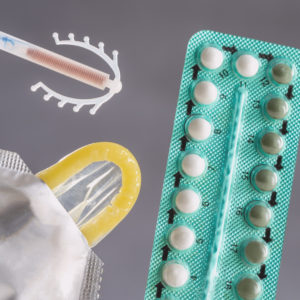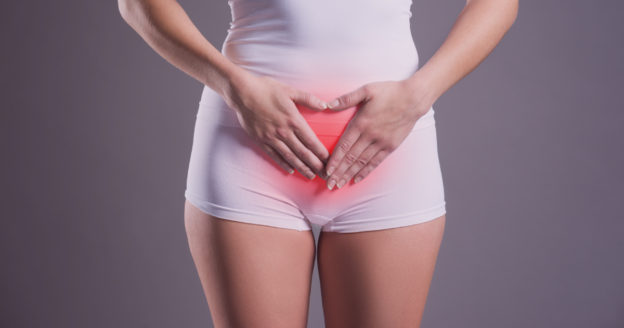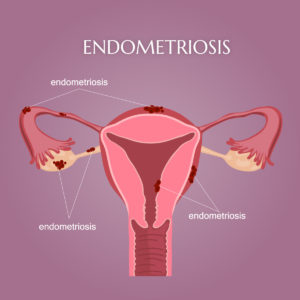Estimates state that more than 99% of the country’s women aged 15 to 44 who have ever had sexual intercourse have used some form of birth control. It’s well past time for a frank discussion on some of the lesser-known facts about birth control every woman should know.
-
There Is A Wide Variety Of Birth Control Methods
Birth control these days is about more than just the pill and condoms; in fact, a wider variety of options exists than ever before, with over a dozen methods approved for use in the United States alone. Here’s a look at some of the most popular, non-permanent methods:
-
Birth Control Pill
The birth control pill has long been the most popular method of hormonal birth control for both teenage girls and women. It’s effective when women use it correctly, and can offer positive hormonal side effects for many, such as lightened menstrual periods and their associated pain.
-
Male Condom
Condoms are the only method that also provides some protection against sexually transmitted infections. This barrier method of birth control has the added benefit of producing almost no side effects for women not allergic to latex.
-
IUD
Both medicated and copper IUDs provide a barrier to implantation of an embryo into the uterine lining, while the medicated IUD also prevents sperm from reaching the egg, making it even more effective at preventing pregnancy without much chance of user error.
-
Injectable
Commonly known as “the shot,” injectable methods of birth control feature a hormonal shot when, if given on the proper schedule, prevents pregnancy for up to three months at a time.
-
Other Methods
Several other methods of birth control exist, though less than two percent of the population uses them. Options include vaginal rings, implants, patches, emergency contraception, barrier methods such as the female condom and diaphragm, and spermicidal methods like vaginal jelly and foam.
What is the preferred form of birth control in your state? Find out here.
-
Most Women And Teenage Girls Aren’t Utilizing The Most Effective Methods
Most women between 15 and 44 aren’t using the most effective methods of birth control. In fact, the most popular method used by family planning providers is the IUD, though only about seven percent of all women in the US use it. Health care professionals also suggest it for teenage girls for its long-term efficacy, zero chance of user error, and reversibility. Once women receive education about all the methods available to them, over 75% chose the IUD, a drastic increase from the national average.
-
Different Methods Have Different Side Effects
Chances are you’ve heard a TV announcer read the side effects list of the advertised birth control method and wondered to yourself if all the side effects are really worth it. While it’s true that most hormonal forms of birth control have potential side effects produced by the different hormones used – and their levels – they have different, and even positive, effects on the user. Combined hormone methods utilize estrogen and progestin, and tend to have a slightly more pronounced signs and symptoms, at least at first. Progestin-only methods skip the estrogen, a trade-off that minimizes hormonal side effects but slightly decreases the efficacy rate.
-
The Side Effects Truly Are Minimal
You’ve likely heard one friend or another citing the negative effects of her birth control method, including weight gain, irritability, and altered periods. However, for most women – that is, women without additional health concerns – most side effects decrease in severity and eventually disappear over time. The series of adjustments your body needs to make to incorporate the hormones involved will lessen, and weight loss is even possible at this stage.
-
Find A Method That Works For You
Of course, you shouldn’t stick with a birth control method that’s making you miserable – all the FDA-approved methods available in the US are effective and you have a wealth of options available. Try a hormonal method with lower levels of hormones, or an IUD without hormones. If you’re having trouble taking your birth control regularly, switch to a method with less hands-on time. The important thing is making your birth control work for you, so it can have its desired effect – pregnancy prevention.
Birth Control Isn’t Taboo
 As mentioned above, when more women learn about all the types of birth control available to them, they tend to make different choices that better fit their lifestyles. Discussion regarding your reproductive health isn’t – and shouldn’t be – taboo. Learn about the different methods of birth control that may work for you, and after you make your choice, research the side effects, risks, and how to properly use them.
As mentioned above, when more women learn about all the types of birth control available to them, they tend to make different choices that better fit their lifestyles. Discussion regarding your reproductive health isn’t – and shouldn’t be – taboo. Learn about the different methods of birth control that may work for you, and after you make your choice, research the side effects, risks, and how to properly use them.
Deciding when and if you want to get pregnant is one of the most significant health decisions you can make, and talking about your options with a women’s healthcare provider like Arizona Gynecology Consultants is a great first step.

Founder and Medical Director of ARIZONA GYNECOLOGY CONSULTANTS
Dr. Kelly Roy is a specialist in surgical gynecology and advanced laparoscopy (and hysteroscopy). She is a long-time resident of Arizona and obtained her Bachelor of Science degree in Biomedical Engineering at Arizona State University before finishing her Doctorate of Medicine at the University of Arizona in 1997.
Dr. Roy completed her residency in Obstetrics and Gynecology at the then “Banner Good Samaritan Hospital” (now Banner University Medical Center), in Phoenix Arizona in 2001.
Well known for her teaching and surgical ability, she is on the faculty at the residency program at both Banner University Medical Center and Saint Joseph’s Hospital in central Phoenix and is a Clinical Assistant Professor of Medicine at the University of Arizona College of Medicine, Phoenix Campus. Dr. Roy has taught advanced surgical techniques to medical students, residents, fellows and colleagues for over 15 years.
Dr. Roy is also a consultant to the medical device industry and has participated in the design and clinical testing of many instruments and surgical devices available on the world-wide market today.
Read More About Dr. Kelly Roy, MD | WebMD Profile | Health.USNews.com Profile | Current Obstetrics and Gynecology Reports: TFA with the Sonata System



 There have been countless fad diets to come and go throughout the years. There are also thousands of supplements on the market that proclaim to boost your metabolism and burn fat with minimal effort. Be wary of these fads and gimmicks. While some fast fat-burning methods may offer seemingly good results in a short window of time, these methods are rarely healthy and more often than not cause more problems than they solve.
There have been countless fad diets to come and go throughout the years. There are also thousands of supplements on the market that proclaim to boost your metabolism and burn fat with minimal effort. Be wary of these fads and gimmicks. While some fast fat-burning methods may offer seemingly good results in a short window of time, these methods are rarely healthy and more often than not cause more problems than they solve.
 Endometriosis is a complex condition that often results in serious and painful symptoms. Endometrium typically grows on the interior of the uterine walls and thickens, breaks down, and then bleeds with each menstrual cycle. When endometrium forms on the outside of the uterine walls, it can affect the ovaries, fallopian tubes, and other pelvic organs in rare cases.
Endometriosis is a complex condition that often results in serious and painful symptoms. Endometrium typically grows on the interior of the uterine walls and thickens, breaks down, and then bleeds with each menstrual cycle. When endometrium forms on the outside of the uterine walls, it can affect the ovaries, fallopian tubes, and other pelvic organs in rare cases.
